#cenozoic dinosaurs
Text
We NEED more Extinct Cenozoic Bird Content!!!!!
Dinosaurs didn't stop at 66mya!!!
Birds didn't magically appear today out of thin air!!!!
They went through tons of evolution and there are so many cool extinct kinds, not just recent ones, but throughout the Cenozoic!!!!
AND BARELY ANYONE DRAWS, DEPICTS, OR TALKS ABOUT THEM
ITS A CRIME
A CRIME, I SAY
Conflict of Interest Report: I study some of them for my job
Should I make an art/writing/etc challenge or something? Fossil Bird November? Idk
#birds#dinosaurs#cenozoic birds#fossil birds#prehistoric birds#palaeontology#prehistory#prehistoric life#cenozoic dinosaurs#palaeoblr#palaeoart
783 notes
·
View notes
Text
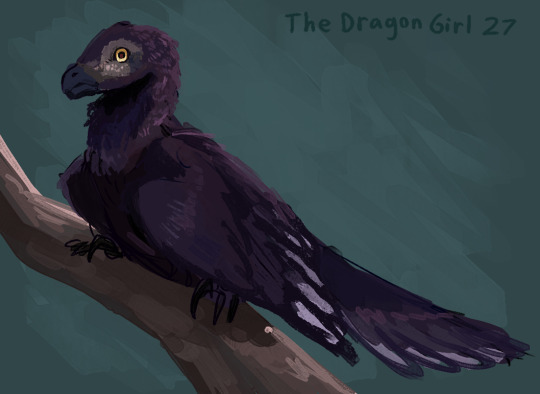



Flocking drawings!
Balaur just sitting around
Megalania taking a bath
Styracosaurus looking at the sunset
a pair of Euparkerias nuzzling
#paleostream#Balaur#Megalania#Styracosaurus#Euparkeria#paleoart#dinosaur#theropod#lizard#ceratopsian#Archosaur#mesozoic#cenozoic#dragon draws creatures#halfway through the Styracosaurus drawing i noticed the sunset had the lesbian colors so she is a women liker now#oh my fucking god this bitch is fucking gay good for her good for her#at least 5 people gay reacted the Euparkeria drawing on the paleostream server so i guess they have been diagnosed with gay too
241 notes
·
View notes
Text
Fossil Novembirb: Day 1 - The Chosen Ones
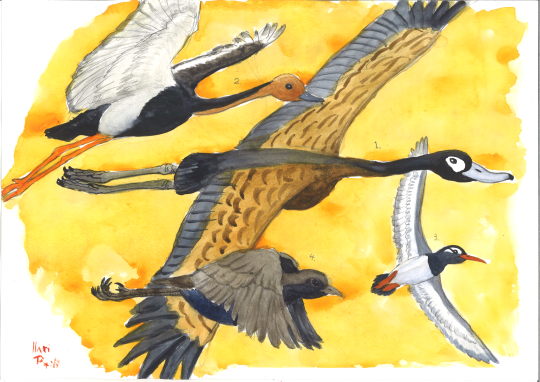
All the dinosaurs died out at the end of the Cretaceous during the K/Pg extinction event 66 million years ago. All of them? No! One group of dinosaurs managed to survive the event and are still around today. Neornithes, or Crown birds. They evolved during the end of the Cretaceous period, and by coincidence, had traits tohelp them survive the cataclysm. Here's a few of these early feathered friends.
Teviornis, a large wading Presbyornithid (flamingo-duck) from Mongolia
"Styginetta", a smaller Presbyornithid (flamingo duck) known from Western North America
Vegavis, a strange, small diving seabird related to ducks and geese, known from Antarctica
Asteriornis, sometimes called the "wonder-chicken", a tiny long legged shorebird related to the common ancestors of ducks and chickens, known from Belgium
#Fossil Novembirb#Novembird#Dinovember#birblr#palaeoblr#birds#dinosaurs#Cenozoic Birds#teviornis#styginetta#vegavis#asteriornis
206 notes
·
View notes
Text

New discovery, just announced a couple of days ago!
164 notes
·
View notes
Text
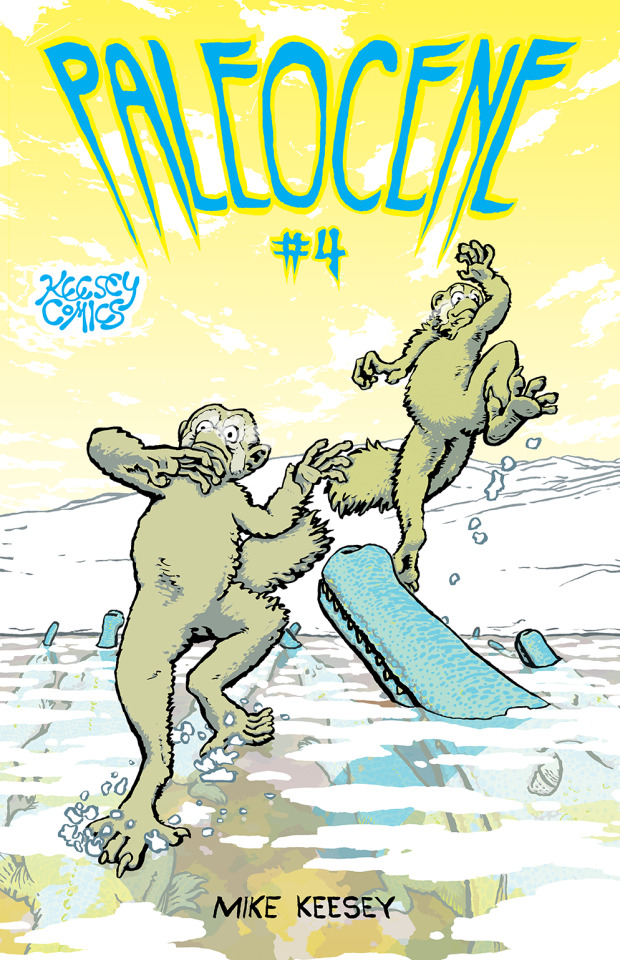
The front cover for my upcoming comic book, Paleocene #4. Check out the campaign to get it printed!
Sixty-six million years ago, the world ended.
A meteorite over ten kilometers in diameter slammed into the Earth. The explosion released two million times as much energy as the largest nuclear bomb ever detonated. All life in the vicinity was instantly obliterated.

For the rest of the world, death was slower. A shroud of soot and dust engulfed the Earth. Without sunlight, plants withered and died, setting off a domino effect up the food chain, all the way to mighty predators like Tyrannosaurus rex. Three quarters of all life on Earth perished, starving in the darkness.
But we survived.
Not “we” as in humankind. This was much earlier. But our early primate ancestors—they persisted. With clutched hands and shining eyes, they witnessed the end of the world … and the early dawn of a new one.

What's in the new issue?
After witnessing a predatory bird devour their fellow troop member, Mamma and Brother continue their search for Sister … now in the freezing cold of winter.
Could the little child possibly have survived? What will happen to Auntie and the rest of the troop in their absence? And, as Brother grows up, will he stay with his Mamma?
If you've been following the story so far, you'll definitely want to read this one, because, I promise, you will finally discover Sister's fate!
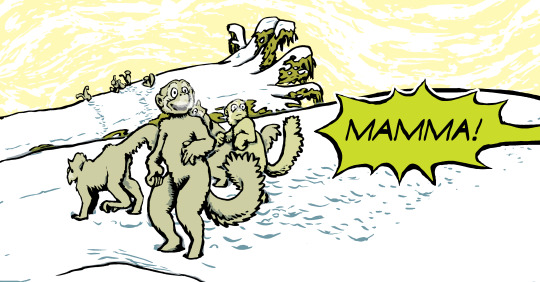
#paleontology#comic covers#comicart#comics#dinosaur#paleoart#palaeoblr#primates#evolution#fossils#prehistoric#biology#zoology#paleofiction#cenozoic#palaeontology#paleocene#reptile#comic books#dinos and comics#comic art#extinction#deep time
142 notes
·
View notes
Text
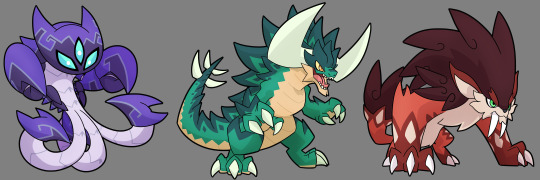
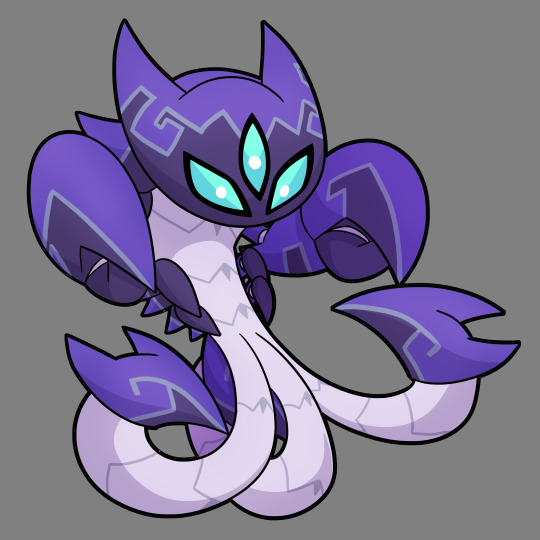


Although I couldn't participate in all kaijune, I did get a little bit of inspiration this month
#digital art#digital illustration#digitalart#digital drawing#digital#kaijune#kaiju#kaiju monster#kaiju creature#creature design#fantasy creature#paleozoic#trilobite#mesozoic#dinosaur#cenozoic#sabertooth#monster#monster design
57 notes
·
View notes
Text

For a while now I've wanted to draw a terror bird but haven't until now
18 notes
·
View notes
Text
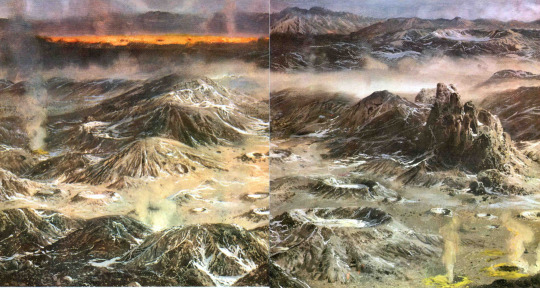
Archaean landscape

Cambrian seafloor with trilobites and jellyfish

The giant placoderm Dunkleosteus, hunting
(look how watery that seafloor is, I love it)
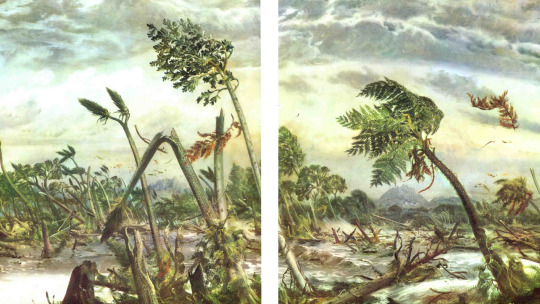
Storm blowing through a Carboniferous forest
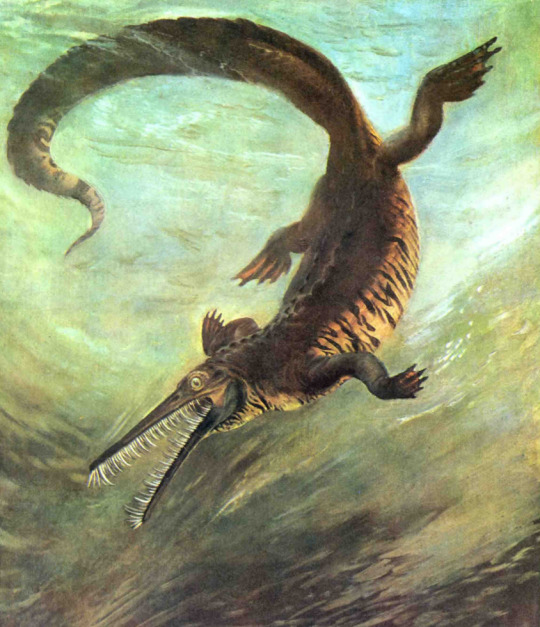
The early marine reptile Mesosaurus

The primitive ichthyosaur Mixosaurus
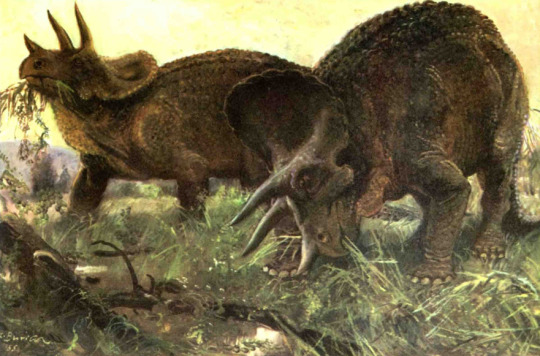
Triceratops grazing (beautiful, but a tad outdated reconstructions!)

Mosasaurus -- the reconstruction is a bit more croc-like than it should, but that water! That motion!

The rhinoceros-kin Metamynodon, wallowing
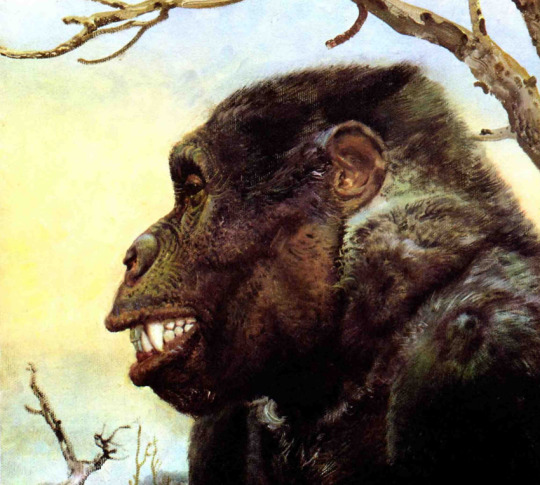
The early ape Dryopithecus
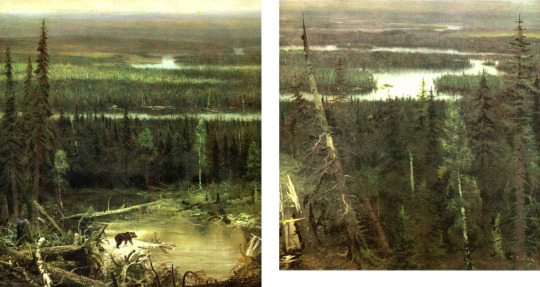
The great Eurasian forest during the Quaternary Ice Age
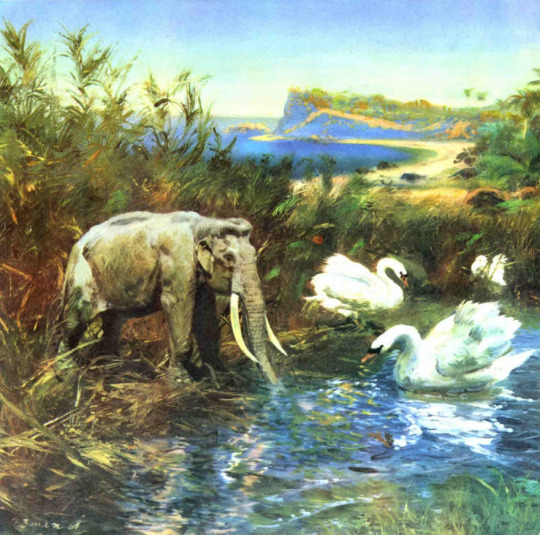
The Sicilian dwarf elephant Palaeoloxodon falconeri
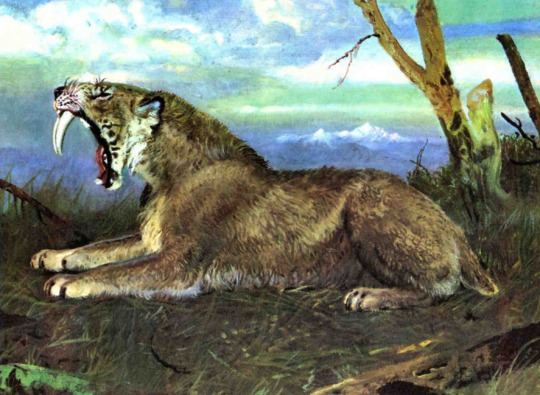
The South American sabertooth cat Smilodon
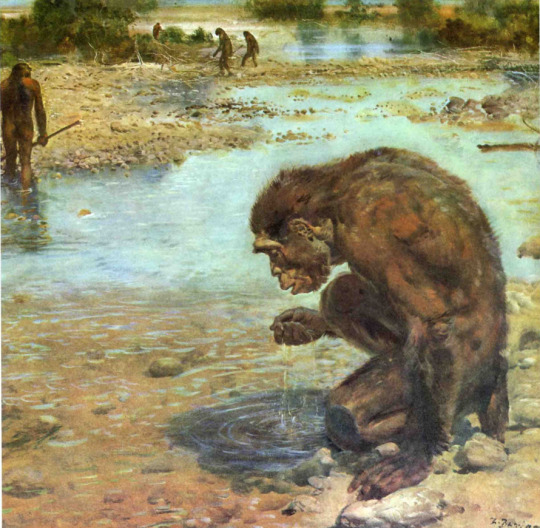
A hominid identified as Homo heidelbergensis (I would imagine it a bit more human-like)

Woolly mammoths, Mammuthus primigenius, digging for grass through the snow

Hunting Megaloceros

Making the Venus of Dolní Věstonice, about 27,000 years ago
* * *
Paleoart by the Czech painter Zdenek Burian (probably mostly painted between 1950 and 1975?), published in Zdeněk V. Špinar, Zdeněk Burian, Life Before Man, 1983
124 notes
·
View notes
Text

This is the End of the Era, but the survivors are still alive and well soon begin on new era.
Happy New Years.
#my art#dinosaur#paleoart#myart#dinosaurs#dinosauria#my drawings#procreate#birds#cenozoic#mesozoic#avian#new year
17 notes
·
View notes
Text
#dinosaur dictionary#questions#dinosaurs#autism#time#precambrian#cambrian#paleozoic#mesozoic#cenozoic#gay dinosaurs#dinos#history#pterosaurs#edestus#tiktaalik#fun facts#lgbtq#memes#poll
33 notes
·
View notes
Text
187 notes
·
View notes
Text

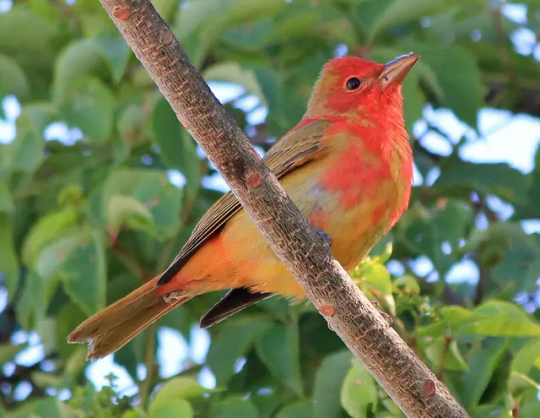
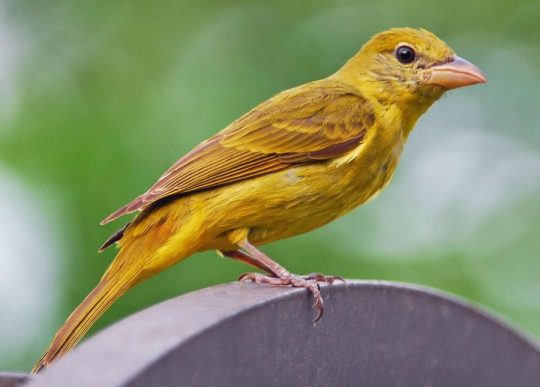


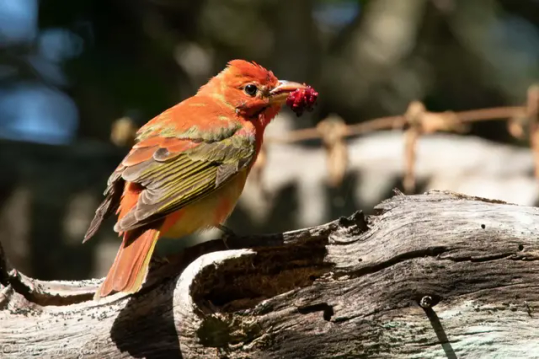
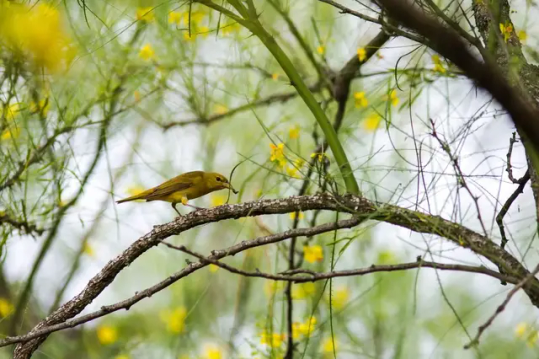

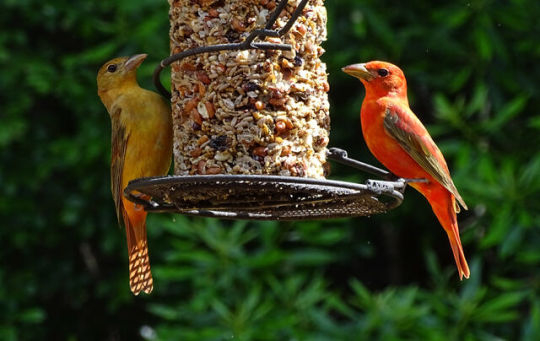



Piranga rubra, better known as the Summer Tanager, is a species of song bird in the cardinal family Cardinalidae which is native to North, Central, and South America. They live in a variety of habitats depending on there range including montane, temperate, an tropical forests as well as dry and riverine woodlands. They feed upon insects (particularly bees and wasps), arachnids, slugs, snails, fruits, and the occasional small vertebrate such as lizards. They are typically solitary animals but are known to form pairs in the mating season and flocks with up to 30 individuals, including mixed species flocks, during migration. There are 2 subspecies: P. r. cooperi which breeds in southwest USA and north Mexico and winters in south Mexico, and P. r. rubra which breeds in the eastern USA and winters in Central and North South America. Reaching around 6.7 to 8 inches (17 to 20cms) in length, 0.9–1.2 oz (25.5 to 34grams) in weight, with an 11 to 12in (28 to 31cms) wingspan, the summer tanager is a medium sized songbird. Males are bright rose or orange-red throughout the year whilst females are olive colored above with a rich yellow or orange underside. They breed during the summer forming pairs which monogamously bond for the season. They construct a bowl shaped nest out of leaves, vines, stems, and grasses amongst a horizontal branch of a tree some 8 to 34ft (2.5 to 10.5m) above the ground. Here the female lays 3-4 pale blueish green eggs with reddish brown spots. They are incubated by there mother for 12 to 13 days straight, whilst there father feeds and protects said mother. After hatching the chicks are cared for by both parents. The young fledge after 8 to 10 days, but remain with there parents for an addition 2 to 4 weeks. Under ideal conditions a summer tanager may reach sexual maturity at a year of age and may live up to 11 years.
#pleistocene pride#pleistocene#pliestocene pride#pliestocene#ice age#cenozoic#stone age#dinosaur#bird#summer tanager#tanager
7 notes
·
View notes
Text
Fossil Novembirb: Day 2 - The Survivors
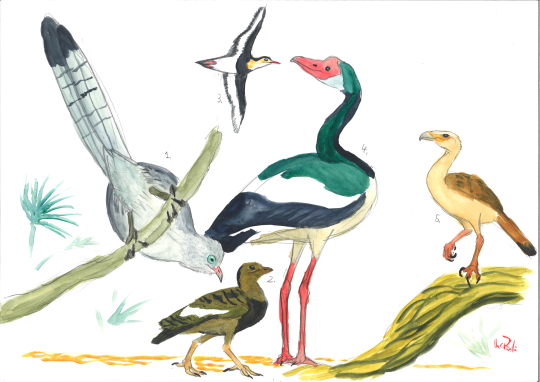
Birds survived the catastrophic End-Cretaceous extinction event, but only by the skin of their beaks. Only a handful of bird species were able to make it. And for the few survivors, the slowly healing world was full of opportunity. They started to expand their ranges and ecological niches, and started to diversify in an exponential rate.
Tsidiiyazhi: The first known mousebird, and one of the earliest known perching birds, or telluraves. Known from New Mexico.
Qinornis: A peculiar flighted ground bird known from China. It might be the only stem-bird to have survived the K/Pg extinction event.
Australornis: A probable relative of Vegavis, a small diving seabird known from Aotearoa (New Zealand)
Conflicto: A large wading waterfowl, related to ducks and geese, and resembling presbyornithids (Flamingo-ducks). Known from Antarctica.
Qiashanornis: One of the earliest known Cariamiformes (seriemas, terror birds and kin) found in China. It had grasping talons to catch small prey.
#Fossil Novembirb#Novembirb#Dinovember#birblr#palaeoblr#Cenozoic Birds#Dinosaurs#birds#Tsidiiyazhi#Qinornis#Australornis#Conflicto#Qiashanornis
106 notes
·
View notes
Text
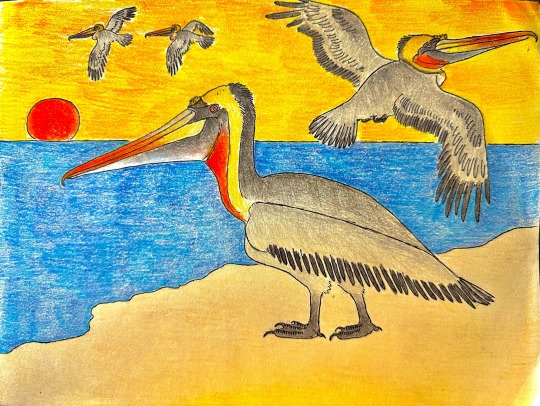
Paraná Pelicans in the Sunset: Pelecanus paranensis is a newly-discovered species of fossil pelican hailing from the late Miocene, and the first one to be found in the New World. It lived along the edges of an inland sea in what is now the Paraná Formation of Argentina, and it was also within the size range of some of the world’s largest extant pelican species. Since the Paraná Pelican was found to have been closely related to the Brown and Peruvian Pelicans I based the bird’s appearance and colours off of those of both species.
#paleoart#paleontology#paleontography#cenozoology#cenozoic life#cenozoic#dinosaur#pelicans#pelican#miocene#neogene
55 notes
·
View notes
Text

Chart with PhyloPic silhouettes from an essay in the upcoming comic book, Paleocene #4. These are lineages that survived the Cretaceous–Paleogene extinction event but died out before the Holocene Epoch (which is almost too brief to be visible here—it is a thin sliver atop the Pleistocene). Figures are not to scale, and do not line up perfectly to lineage extinction dates, just to epochs. This chart is available under the CC BY-SA 3.0 license.
For more information about the silhouettes in the chart, see: https://www.phylopic.org/.../7dc1ae186d11d8c2ad9f502fc47d...
For more about the comic book, see https://www.kickstarter.com/projects/keesey/paleocene-4-comic-book
#extinction#paleontology#dinosaur#paleoart#palaeontology#prehistoric#biology#zoology#botany#extinct animals#extinct species#extinct birds#cenozoic#sciart#palaeoblr#deep time#geologic time
72 notes
·
View notes
Text

Pelagornis by Paleopete.
12 notes
·
View notes